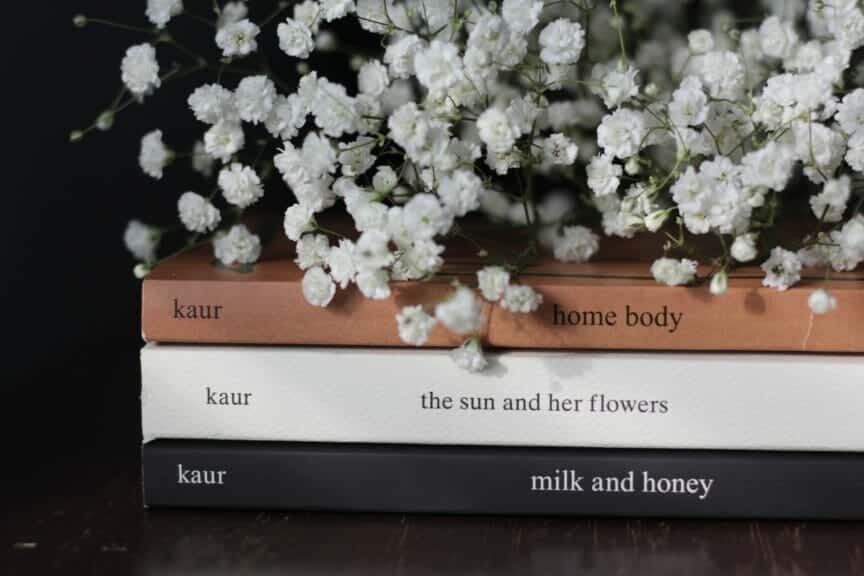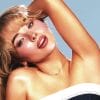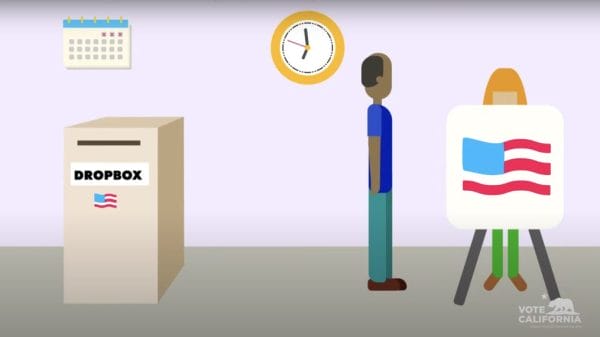“Epic of Gilgamesh”: the first poem ever written. The anonymous poet inscribed this text on clay tablets in around 750 B.C.E. Millenniums later; we’re still captivated by this craft. And, funnily enough, poetry (or insta-poetry) today is also etched into tablets… just of a very different kind.
What is Insta-Poetry?
Insta-poetry. Those aesthetically pleasing words that just tumble down the page (well, screen). Usually embellished with a minimalist graphic or watercolour background, these bite sized stanzas cover challenging and taboo subjects. Mental health, politics, relationships; you’ve likely scrolled past all of them today. Here lies the question. Are they just yassified Tumblr quotes or can we ascribe esoteric value to these works?
An article from The Atlantic states that since the publication of the Rupi Kaur’s bestselling book Milk and Honey, poetry has become one of the fastest growing categories in bookselling. In 2018, Instagram poets made up 12 out of the 20 best selling poets, and the genre has only grown since.
Who’s writing these poems?
The 29-year-old Canadian poet, Rupi Kaur, rose to fame in 2015 after Instagram removed a photo that was part of her series on menstruation. This catapulted her into the spotlight. The poetry collection Milk and Honey, which she’d self-published the previous year, soon became a New York Times bestseller.
In an interview with The Guardian, Kaur revealed that her original aim wasn’t to write a book:
“I was posting stuff online just because it made me feel relieved – as a way of getting things off my chest.”
Kaur, Rupi: The Guardian
Contrary to this, Milk and Honey has since been translated into 42 languages and sold 3.5 million copies. This tops the previous bestselling poetry book: none other than The Odyssey. A member of the Forbes under 30 list in 2018, Kaur has shown us the power of social media. When poetry anthologies, magazines, and journals had given Kaur a resounding no, Instagram gave her the platform to write, publish, and illustrate a bestselling book.
However, although Kaur may be the most successful Instagram poet, it all started with Lang Leav. When herr self-published Tumblr poems gained a following, it led to her book, Love and Misadventure, which sold over 150,000 copies. Speaking about insta-poetry in Publishers Weekly, Leav compares the genre to the 1950 Beat poet movement. She notes poets such as Ginsberg and Keroauc, who were anti-establishment and sought to encourage this view through their work.
Is this poetry?
Watts says not.
In response to criticisms of insta-poetry, Leav argues that there is a space for the genre, despite the doubt:
‘I think there is absolutely a place for esoteric poetry, and I love esoteric poetry, but the type I write can be a stepping stone to people getting engaged with the category, and I think that sales have improved for poetry on the whole because of this modern genre.’
Leav, Lang: Publishers Weekly
However, Rebecca Watts would beg to differ. In her essay, ‘The Cult of The Noble Amateur’, she questions whether insta-poetry is even an art form. And in doing so, she portrays it as greatly inferior to more traditional poetry. Whereas Kaur celebrates the ways in which social media has allowed her to benefit financially from her poetry, Watts criticises these capitalist incentives.
‘In the redefinition of poetry as ‘short-form communication’ the floodgates have been opened. The reader is dead: long live consumer-driven content and the ‘instant gratification’ this affords.’
Watts, Rebecca: ‘The Cult of The Noble Amateur
Insta-Poetry: A Cult Of Personality
In a somewhat patronising commentary on insta-poets as a monolith, Watts dubs them as ‘personality poets’. She does not believe that they have broken any taboos; sex, relationships, and motherhood have all been written about before. In fact, she goes as far to critique sales based on the ‘unpretentious’ presentation of thematic hooks.
“It is a twisted sort of vanity that leads a person to crave applause for what they believe to be their worst creations. Yet… the cult of personality that social media fosters works precisely this way: once you care about the person you’ll consume anything they produce – especially if it makes you feel better about your own lack of talent.
Watts, Rebecca: ‘The Cult of The Noble Amateur’
Watts claims that insta-poets do not accumulate a readership based on their objective talent. Instead, they have a following which is based on their inherent charisma. Throughout the essay, Watts repeatedly questions whether maintaining a smokescreen of elitism around poetry is beneficial. On one level, this makes sense. Why do we want our poets to fall to the level of the general population but our doctors, lawyers, and teachers to reach the very top of their field?
On the other hand, Watts’ judgement is entirely unfounded. Surely the role of the poet is to relate to their readership? Is a poem not a mirror held up to a reader, who continues to look and to read because they see themselves? What Watts terms ‘vanity’ is surely just human nature. Nor is she correct in her blame upon social media for sparking ‘personality poetry’. Clearly Watts has never read Plath, Hughes, or Sexton: the confessional poets whose entire (very successful) careers depended upon their expression of their most inner feeling.
’Let’s Talk.’
In 2021, Ada Wofford, senior editor of The Minison Project, wrote a “Let’s Talk” series on Insta-poetry. She questions that if Watts can’t find any value in the countless poems published on Instagram, then she might be the problem. However, unlike Watts, Wofford offers readers a discursive, nuanced argument. Though she notes her own dislike of the genre, Wofford continues to seek how it could benefit the literature industry.
With the help of James Longenbach’s book The Art of The Poetic Line, Wofford criticises Kaur’s lack of rhythm or meaningful line breaks. She takes one of Kaur’s untitled, fragmented works (121) from Milk and Honey and edits, considering syllables, stresses, line endings, punctuation, and capitalisation. The result is both a more cohesive, compelling poem and an understanding of Kaur as a sloppy under-performer.
Do You get Deja-Vu?
Unlike Watts, the criticism here is not of ‘short form communication’, but the lack of thought that has gone into Kaur’s delivery of her message. For example, the modernist poets such as Ezra Pound and William Carlos Williams famously wrote brief, minimalist poetry.
“so much depends
upon
a red wheel
barrow
glazed with rain
water
beside the white
chickens”
Carlos Williams, William. ‘The Red Wheelbarrow”
Often interpreted as metaphor for the importance of transient moments and as a commentary of the literal importance of agriculture, it’s undoubtable that Williams’ poem relies heavily on imagery.
The Purpose Of Insta-Poetry
Following this, it would be easy to assume that insta-poetry lacks this figurative element. However, Wofford suggests that perhaps the metaphors within insta-poetry are created through the interaction with social media in its entirety.
‘The poem functions via a complex interplay between the text, the image, and the hashtags’
Wofford, Ada. “Let’s Talk”.
I’d also like to speak to the importance of the interaction of the reader. Much of Kaur’s work in particular focuses on a community of women who have struggled with domestic abuse, sexual trauma, or mental health issues. I can’t deny that insta-poems often lack the literary conventions which the curate the beauty and impact of a piece. However, meaning can still be reaped from their words. Often, when applied to the life of an individual reader, the metaphor writes itself.
“In its classical definition, ekphrasis describes an absent image and therefore “tries to make the listeners into spectators.”
Paquet, Lili. Selfie Help: The Multimodal Appeal of Instagram Poetry
This idea of an ‘absent image’ is very similar to the seed which insta-poets plant in the mind of readers. I understand that the point of insta-poems is to be imperfect, unfinished, and easy to relate to. But, if you cannot appreciate these poems as fully fledged works of art, then I ask you to view them as a starting point or a thought.
Ultimately, everything can be poetry though this doesn’t mean that everything should be. I do question the poetic value of these insta-poems. But, what I can’t argue with is their impact. It’s dichotomous to suggest that something which has millions of readers lacks any importance. Insta-poetry has clearly enlightened people, sparked thought, and brought communities together. And… what other purpose does poetry really have?














